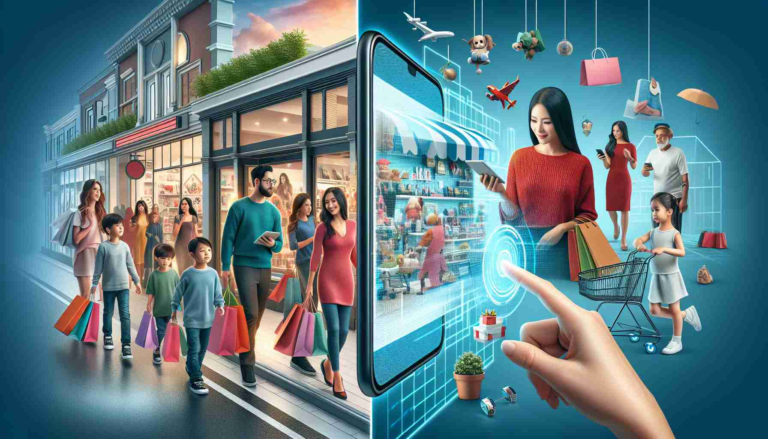Smartphones change shopping behavior beyond the web
Consumers no longer rely solely on online platforms for price comparisons; the in-store shopping experience is also being enhanced by digital tools. Retail customers often pull out their smartphones to compare prices and take a closer look at product details without ever leaving the store. Retailers are encouraged to integrate their digital presence with their brick-and-mortar stores to accommodate this new consumer habit.
Survey Reveals Mobile Price Checking in Stores
A recent omnichannel study by the University of St. Gallen’s Center for Retail Management Research found that 20% of German-speaking European (DACH) consumers use their smartphones to compare prices in-store. Additionally, these shoppers actively seek out product information (13%) and check customer reviews (7%) while browsing brick-and-mortar shelves. This trend is even more pronounced for electronics purchases, with 25% of consumers comparing prices while in-store, 13% looking for additional information, and 12% reading online reviews.
Impact on retailers
This research activity highlights the convergence of online and offline shopping experiences. Customers may visit competitors’ brick-and-mortar stores less, but they check out online products more frequently and using smartphones in stores to compare products is becoming as common as online shopping. This shift is putting pressure on retailers to enhance the in-store experience with digital capabilities.
For example, offering an optimized store app can help. IKEA has been active in this area, allowing customers to scan products in-store for additional information and delivery options. This not only counters the trend of price-checking with competitors, but also streamlines the shopping process for consumers.
Retailers remain vigilant
But the presence of mobile devices in stores doesn’t mean retailers can stop customers from browsing competitors’ online offers. To address this, businesses need to closely monitor competitors’ websites and adjust their offers as needed, as when buying high-value items, consumers tend to look for more touchpoints before making a purchase decision.
These insights, based on an analysis of the shopping behaviour of omnichannel shoppers in Germany, Austria and Switzerland, contribute to a body of research that includes studies from the past few years and highlight the resurgence in importance of physical stores.
The Emergence of Omnichannel Retail
With the emergence of omnichannel retail, the lines between in-store and online shopping are becoming increasingly blurred. An omnichannel strategy seamlessly integrates different shopping channels – mobile internet devices, computers, brick-and-mortar stores, television, radio, direct mail and catalogs – to deliver a unified customer experience. The growth of mobile commerce (m-commerce) has played a pivotal role in this evolution, with shoppers using their smartphones to carry out a range of shopping-related activities, including price comparisons, searching for product information and reading reviews, as highlighted by a study from the University of St. Gallen.
Digital Transformation in Retail
Retailers are in the midst of a digital transformation, not only needing to maintain an online presence but also integrating their physical stores with digital tools. Communications infrastructure such as 4G and 5V networks are enabling this rapid digital shift, providing consumers with faster and more stable connectivity. Technologies such as augmented reality (AR), virtual reality (VR), and beacons are further bridging the gap between the digital and real worlds, enhancing the in-store experience by enabling virtual try-ons and sending customized promotions directly to customers’ smartphones.
Personalized Shopping Experience
The ability to use data analytics to personalize shopping experiences is a major benefit of integrating digital and brick-and-mortar retail. Retailers can leverage data collected from both online and in-store interactions to better understand customer preferences and behaviors and provide personalized recommendations, targeted advertising, and tailored promotions both in-store and online.
Main challenges and controversies
One of the biggest challenges facing retailers is maintaining price competitiveness while adding value to customers through digital and physical integration. There are also data privacy issues, as the use of personal data for customization requires strict data protection measures. Another challenge is ensuring that staff are well trained to handle the technology and provide the human touch that cannot be fully replicated through a digital interface.
Pros and Cons
The benefits of retail evolution include:
– Enhanced customer experience: Digital tools improve the in-store experience, making shopping more convenient and profitable.
– Data-driven insights: Retailers can better understand customer preferences and customize their offerings accordingly.
– More sales platforms: Multiple channels increase the number of touchpoints, which can lead to increased sales.
Potential disadvantages include:
– Security risks: Increased use of personal data can increase the risk of data breaches.
– High implementation costs: Technology integration can be costly and complex.
– Over-reliance on technology: Over-reliance on digital tools can alienate certain customer segments who prefer a traditional shopping experience.
Recommended Related Links
For more information on the evolution of retail and digital-physical integration strategies, see:
– National Retail Federation
– Retail Dive
The sources and materials provided through these links will play an important role in shaping the conversation about the future of retail, so be sure to rely on them to expand your knowledge on the subject.


